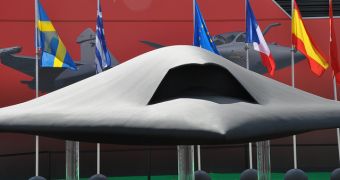An Iranian engineer that’s currently studying the captured US drone revealed that they managed to bring it down using a GPS vulnerability they knew about.
According to CSMonitor, the warplane was based in Afghanistan, but with the aid of the GPS flaw they managed to reprogram it to land in Iran.
After cutting off communication links, Iranian specialists reprogramed the RQ-170 to make it believe that its home base was actually in their country. This is apparently how they managed to make it land almost undamaged.
While the Iranians knew of the flaw after studying the other drones they managed to shoot down, it seems as the US was also well aware of the weakness that was taken advantage of by the enemy.
“The GPS navigation is the weakest point,” the Iranian engineer told the Monitor. “By putting noise [jamming] on the communications, you force the bird into autopilot. This is where the bird loses its brain.”
By using the GPS vulnerability, they practically made the aircraft “land on its own where it wanted to,” without having to hack into the communication systems that controlled it from the command center.
Few people would have imagined that Tehran has a way to fight back against the United States, but as it turns out, reverse-engineering can do wonders if you’re persistent enough.
Former US Navy electronic warfare specialist Robert Densmore claims that the explanations given by Iran to take down the warplane are very plausible. The GPS systems on these flying spies can be recalibrated to make them follow any course and land at a given location.
"Even modern combat-grade GPS [is] very susceptible,” Densmore said. “I wouldn't say it's easy, but the technology is there.”
A couple of days ago, Barack Obama officially asked Iran to return the captured drone, but it’s very unlikely that they’ll just hand over such precious loot. At some point they may give it back, but only after they tear it apart and study its every fiber and chip.

 14 DAY TRIAL //
14 DAY TRIAL //